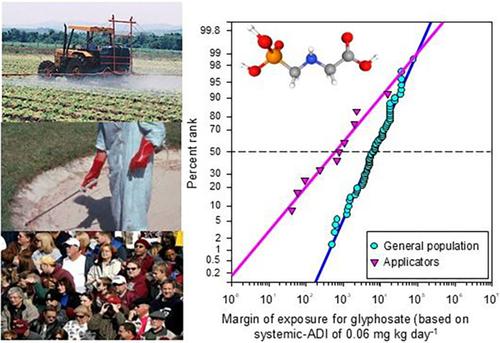当前位置:
X-MOL 学术
›
Pest Manag. Sci.
›
论文详情
Our official English website, www.x-mol.net, welcomes your
feedback! (Note: you will need to create a separate account there.)
Measured exposures to glyphosate in applicators and the general population: an updated review of the scientific literature since 2020
Pest Management Science ( IF 3.8 ) Pub Date : 2025-06-03 , DOI: 10.1002/ps.8901
Keith R. Solomon
Pest Management Science ( IF 3.8 ) Pub Date : 2025-06-03 , DOI: 10.1002/ps.8901
Keith R. Solomon

|
Glyphosate is one of the most widely used herbicides in the world and its continued use in agriculture and other scenarios is the focus of intense public and scientific interest. Glyphosate is also controversial in that it was declared ‘probably carcinogenic to humans (Group 2A)’ by the International Agency for Research on Cancer in 2015. However, since that time, regulatory agencies in many countries have reviewed the public literature and guideline studies submitted for regulatory purposes and have concluded that it is not a carcinogen. The acceptable daily intakes (ADIs) and the reference dose (RfD) have been revised and restrictions on use have been lifted in many locations. Risk assessment for any pesticide requires information on exposure in humans and the environment and this was reviewed in 2016 and in 2020. Since 2020 many studies have been published in the literature and by government departments. Most of these studies have focused on exposures of the general population, which is the subject of this paper. Based on the studies published since 2020, the overall conclusion is that exposure of applicators and the general population to glyphosate represents a de minimis risk. In addition, a general observation from the larger population-based studies that conduct routine sampling is that exposures have declined somewhat since 2020. © 2025 The Author(s). Pest Management Science published by John Wiley & Sons Ltd on behalf of Society of Chemical Industry.
中文翻译:

测量的施药者和普通人群对草甘膦的暴露:自 2020 年以来科学文献的更新回顾
草甘膦是世界上使用最广泛的除草剂之一,它在农业和其他场景中的持续使用是公众和科学界强烈关注的焦点。草甘膦也存在争议,因为它在 2015 年被国际癌症研究机构宣布“可能对人类致癌(第 2A 组)”。然而,从那时起,许多国家的监管机构审查了为监管目的而提交的公共文献和指南研究,并得出结论,它不是致癌物。可接受的每日摄入量 (ADI) 和参考剂量 (RfD) 已修订,许多地方已取消使用限制。任何杀虫剂的风险评估都需要有关人类和环境暴露的信息,这在 2016 年和 2020 年进行了审查。自 2020 年以来,许多研究已在文献和政府部门发表。这些研究大多集中在普通人群的暴露上,这也是本文的主题。根据自 2020 年以来发表的研究,总体结论是施药者和普通人群暴露于草甘膦的风险极低。此外,进行常规抽样的更大规模的基于人群的研究的一般观察是,自 2020 年以来,暴露量有所下降。© 2025 作者。由 John Wiley & Sons Ltd 代表化学工业协会出版的《害虫管理科学》。
更新日期:2025-06-04
中文翻译:

测量的施药者和普通人群对草甘膦的暴露:自 2020 年以来科学文献的更新回顾
草甘膦是世界上使用最广泛的除草剂之一,它在农业和其他场景中的持续使用是公众和科学界强烈关注的焦点。草甘膦也存在争议,因为它在 2015 年被国际癌症研究机构宣布“可能对人类致癌(第 2A 组)”。然而,从那时起,许多国家的监管机构审查了为监管目的而提交的公共文献和指南研究,并得出结论,它不是致癌物。可接受的每日摄入量 (ADI) 和参考剂量 (RfD) 已修订,许多地方已取消使用限制。任何杀虫剂的风险评估都需要有关人类和环境暴露的信息,这在 2016 年和 2020 年进行了审查。自 2020 年以来,许多研究已在文献和政府部门发表。这些研究大多集中在普通人群的暴露上,这也是本文的主题。根据自 2020 年以来发表的研究,总体结论是施药者和普通人群暴露于草甘膦的风险极低。此外,进行常规抽样的更大规模的基于人群的研究的一般观察是,自 2020 年以来,暴露量有所下降。© 2025 作者。由 John Wiley & Sons Ltd 代表化学工业协会出版的《害虫管理科学》。


















































 京公网安备 11010802027423号
京公网安备 11010802027423号